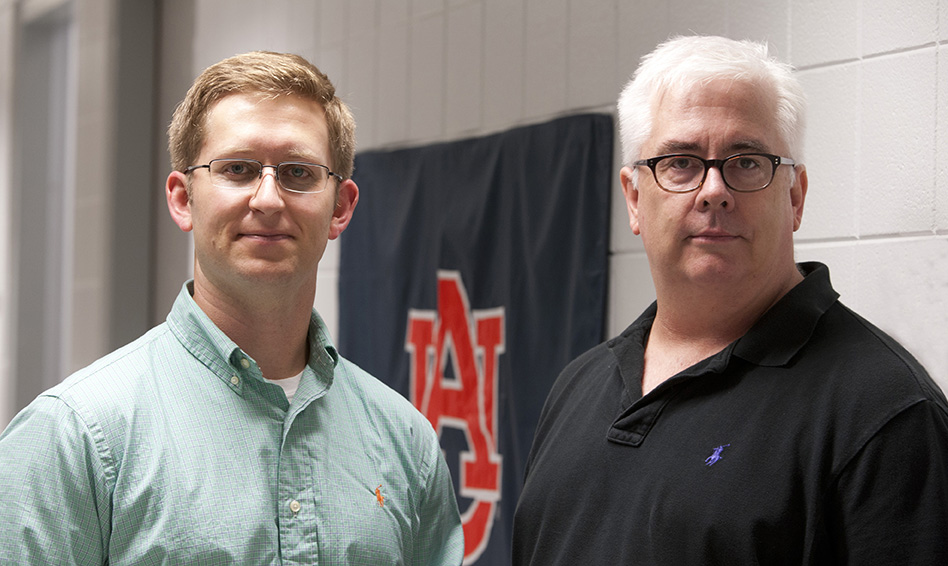COSAM News Articles 2013 September Auburn professors develop disease-detection technology, possible key to new handheld detection devices
Auburn professors develop disease-detection technology, possible key to new handheld detection devices
Two Auburn University professors have developed a disease-detection technology that could be the beginning of handheld, point-of-care devices – a breakthrough that would let health care professionals, first responders and even individuals quickly do blood tests for a variety of illnesses and conditions.
Associate Professor Christopher J. Easley and Professor Curtis Shannon, both in the Department of Chemistry and Biochemistry in the College of Sciences and Mathematics, led the research team that published its results in the March 27 issue of the Journal of the American Chemical Society.
“This new technique is rapid and accurate,” Easley said. “We can get results in three minutes compared to current lab technology which takes six hours. Our technique is also very flexible in that it should require relatively minor adjustments to detect hundreds of other proteins that are biomarkers for diseases.”
The Process
Easley engineers DNA strands and uses chemistry to attach them to two standard antibodies already known to bind to a specific protein in blood. When the two antibodies attach to the protein in the blood sample, the DNA strands on each antibody come together onto a metal electrode to produce an electrochemical signal. The magnitude of the signal indicates the protein level in the blood, a process they termed as electrochemical proximity assay, or ECPA.
Easley’s lab attaches the DNA to the antibodies while Shannon works with the electrochemical process.
“We detected the insulin protein level in mouse serum in three minutes,” said Easley, who began conducting the research in late 2011. “We can apply this to many proteins that are biomarkers for diseases. The technique is very sensitive, too. We can detect 5,000 times lower than the normal amount of insulin in blood.”
The researchers also performed normal laboratory tests using current technology and found the new technique detected a much wider range of protein levels and at much lower concentrations. Since the technique involves an electrical measurement, Shannon says it could be miniaturized like any electronic device, such as a glucose meter.
“Electrochemistry’s advantage over other types of detection technology is that it is relatively low cost and it can be miniaturized,” Shannon said. “We have no handheld device now, but our technology could be the foundation for a device that a healthcare company could commercialize for point-of-care analysis. They would need to do clinical trials on human blood first.”
Targeting Different Diseases
The Auburn researchers can target different protein-based biomarkers by changing the two antibodies to target other diseases. Potential applications could include tests for liver disease, cancer, inflammation of the heart, Alzheimer’s disease, tuberculosis, pancreatitis, diabetes, kidney disease and numerous others, Easley said.
“You could get a sample of blood and determine if a person has a disease with a predefined biomarker,” he said. “A single device could be used for diagnosis of multiple diseases by simply switching out the antibodies on the metal surface.
“The technology could have an impact on biomedical research as well, such as understanding how a person’s insulin spikes when he or she drinks a soft drink. As far as I know, there is no other way to so rapidly detect insulin now.”
The research is funded by the National Science Foundation, the USDA and the National Institutes of Health and is supported by Auburn’s Office of the Vice President for Research and the Office of Technology Transfer. The university has applied for a U.S. patent on the new technique and is considering licensing the technology to an external company for further development.
“We are really excited about the potential for this technology,” Easley said. “This technique works really well and is consistent. It can be miniaturized and it gives quantitative measurements.”
Latest Headlines
-
02/12/2025
-
02/11/2025
-
02/10/2025
-
01/30/2025
-
12/03/2024



